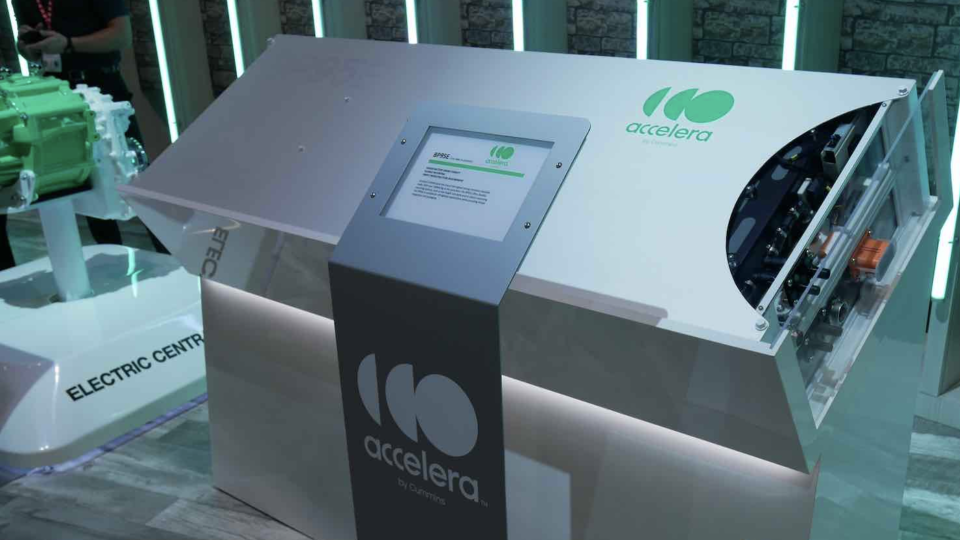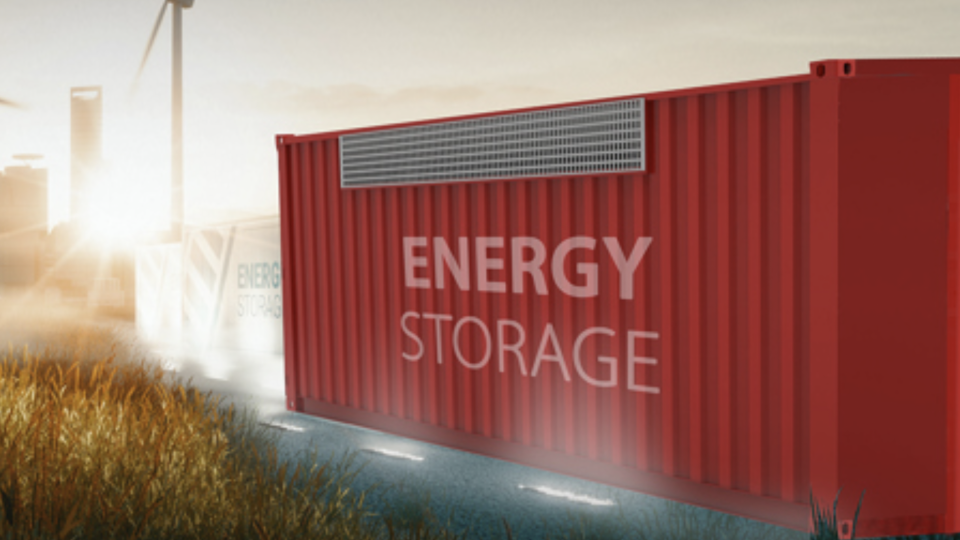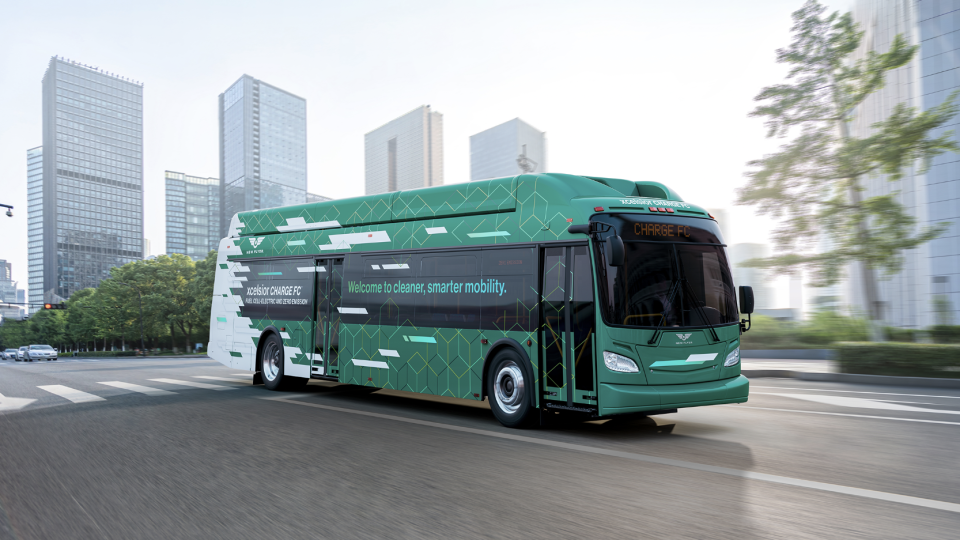How to get the most out of e-bus batteries?
The battery is the last relevant remaining wearing part of an electric vehicle – and by far the most expensive. How to charge it properly? How to reduce TCO as much as possible? Safety concerns? Three experts discuss tips, tricks and outlooks concerning the heart of EVs

Below, an article published on September 2022 issue of Sustainable Bus magazine featuring Claudius Jehle, Martin Ufert and Harry Hoster (bio at the bottom)
The battery is the last relevant remaining wearing part of an electric vehicle – and by far the most expensive. How to charge it properly? How to reduce TCO as much as possible? Safety concerns? Three experts discuss tips, tricks and outlooks concerning the heart of EVs
An experts’ discussion about future powertrain technologies in heavy-duty transport. This is how we may entitle this interview. We met Claudius Jehle, CEO of volytica diagnostics, Dr. Martin Ufert, Group Manager for System Monitoring and Operational Strategies at Fraunhofer Institute for Transportation and Infrastructure Systems IVI and Prof. Dr. Harry Hoster, Chairman of Energy Technology at the University of Duisburg-Essen and Head of the Hydrogen and Fuel Cell Center ZBT GmbH, to take a look at the future of our mobility system, with a focus on the electrification of public transport.
We will not immediately have a way of manufacturing solid-state batteries at scale. It’s always about safety. With the existing lithium-ion technology we learned all the hard lessons when they were in laptops and early mobile phones. We don’t even know what the ‘training ground’ for the solid-state batteries will be
The powertrain for the future of mobility
The future of mobility is electric – only the powertrain technology is still written in the stars. Which powertrain technology do you think will win the race and why?
Claudius Jehle: «In my mind there will be no ‘winner’. The future will still have combustion engines, hybrid- as well as fully battery-powered vehicles. For anything up to several hundred kilometers of range, Li-Ion batteries are predestined from today’s perspective, and for everything beyond, hydrogen or other technologies will be the system of choice».
Harry Hoster: «Yes, for long-haul and heavy-duty there will be a growing share of hydrogen. Now, fuel cell technology for hydrogen usage has not reached the level of mass production. Where I see hydrogen being quite relevant – once ready – are municipal fleets like waste trucks or logistics. The heavy goods industry is keen on hydrogen because of the higher energy density compared to battery packs».

In terms of transport, the attention has largely been turned away from hydrogen, but in the transport sector, it continues to raise hope. What developments can be expected here?
H.H. «The expected development is the transition to mass production. The big issue that currently holds back the large-scale introduction of fuel cells into heavy goods transport are the concerns about the lifetime of fuel cell stacks. The current technology, which has been tested on normal passenger cars, won’t work here because of the totally different availability and load requirements».
C.J.: «History seems to repeat itself. We have seen – a decade ago – infancy, degradation, problems with cracking, problems with water inrush in PV modules. Then the same happened, or now happens, with batteries. Now degradation and all the same issues are being faced by the promising hydrogen technology. This affects both the production side, like electrolyzers, and the fuel cells on the consumption side. That’s actually very interesting».
If you are using NMC technology, you should not charge at low temperatures, especially not too fast. This combination can really cause safety issues in the long run! Also, an often neglected factors the level to which you charge, the state of charge and the window in which you operate an asset
Li-ion, solid-state, raw materials…
Li-ion technology currently dominates the market – but raw materials are becoming rare, and a true circular economy is far from being ‘closed’ – what role will Li-ion technology play in 2030, or further away in 2045?
Martin Ufert: «In 2030 still a dominating role, 2045 quite hard to say. Lithium-ion technology will have a big role, especially NMC or LFP technology. There are some other promising approaches at the moment but still not at a commercial upscale role at the moment».
H.H. «If you are alluding to solid-state, I know that the car industry is investing huge amounts of money and there is always the chance that they have something up their sleeve that is not yet published».
M.U. «By the way, to be clear, ‘solid-state’ batteries are also just Lithium-ion batteries. The liquid electrolyte that enables the Lithium-ion to move inside the battery, to transport energy between the terminals, is replaced by a solid one. Sounds a bit boring, right?».
H.H. «True, let’s touch on the advantages later – but do you know how long it took for LFP to reach the mass market? I’m not overly optimistic about quick wins of solid-state. Even if now we have working solid-state battery prototypes in the laboratory, we will not immediately have a way of manufacturing it at scale. It’s always about safety, especially at system level. We shouldn’t forget that with the existing lithium-ion technology we learned all the hard lessons when they were in laptops and early mobile phones, with all the fires that happened. We don’t even know what the ‘training ground’ for the solid-state batteries will be. It would be unusual if they would immediately go to the mass market of electric vehicles…».
M.U. «And the current lithium-ion technology is still improving! Or at least, advancing. If at all solid-state should quickly reach scalability, it’s still a question of the price at the end».
Dr. Hoster, you postponed the question of the advantages of solid-state. What do we hope that solid-state will achieve? Will it be safety, longer range or simply being cheaper?
H.H. «The biggest driver will be safety. I think there will be more pressure on the industry to reduce the flammability, especially relevant when it comes to shipping and logistics in the large sale. As said, the fact that the often highly flammable liquid electrolyte in conventional, state-of-the-art, Li Ion batteries is replaced by a solid one – hence the name – makes this technology a good candidate for higher safety. But the rest of the technology remains, give or take, the same – it is still Lithium-ion technology! Let’s assume they manage to go for lithium metal anodes and we get rid of the graphite: that helps us save a bit on the raw material side and gain a bit of energy density. But on the cathode side, I would suspect that we would still end up with very similar materials as they are currently used in the existing lithium-ion world».
C.J. «That is actually extremely interesting and should be highlighted. Many people often compare: ‘There is Lithium-Ion and then there is the magic bullet, the other technology that has nothing to do with lithium-ion, solid-state – lives longer, is cheaper, higher energy density and safer, but this is not correct. In my mind, people are overestimating the potential that this could bring, if it was available».
C. J. «Seems odd, some of the e-bus fires in the last 12 months are attributed to so-called solid state technology, the last in Paris earlier this year. But to be clear: this technology is an early version, working at elevated temperatures of >50°C, only remotely related to the anticipated solid-state technology. There is just no ‘magic bullet’ around and no simple truths. I think, people are overestimating and oversimplifying».
M.U. «And to be fair, speaking about safety: batteries today are safe. The catastrophic fires that we have seen in buses and other assets in the past can not even be attributed to cell failures, and often the charging system is potentially the culprit. There is too much panic around!».
C.J. «Oh yes! With proper management and centralized analysis, even the last few 0.x% of likelihood can be detected hours to days, even weeks beforehand. But as said: Only if we take a close look and monitor them».
Fast charging vs slow charging
Talking about degradation: fast charging, charging cycles and temperature windows make proper charging and operation complex. What must be considered here in the context of cell degradation?
C.J. «It depends on which cell type of the large landscape is being used. One rule of thumb: if you are using NMC technology, you should not charge at low temperatures, especially not too fast. This combination can really cause safety issues in the long run! Also, an often neglected factor is the level to which you charge, the state of charge and the window in which you operate an asset».
H.H. «A lot of that is not always under the control of the end user, don’t you think?».
C.J. «No, I think, many things can be controlled by the end user. You can control the SOC at which you park, the window in which you operate – 80% to 20% is often better than 100% to 40%! And you might be able to plant some trees to shade roof-top mounted batteries for basic temperature control. Also good for the environment. These measures can easily extend lifetime by more than 10 to 20%. Not to speak of fast charging…».
M.U. «True, fast charging mostly has cell degradation as a consequence. Still, for a fleet operator the TCO is at the end always the main point to look at. If the short-term economical advantages gained by faster charging outweigh the long-term problems, i.e. premature failure and lower resell value, then that can be a fair deal. But how many companies do this calculation? If you have, like Claudius said, fast charging just because you can and you charge your vehicles without considering these aspects, then fast charging is probably not the right choice».

Is there anything we can do to bring low TCO, longevity, safety, and environmentally friendliness more into line?
C.J. «There is a lot you can do for TCO and safety. Depending on charge patterns, storing the assets, how you park them and how you use them, you can easily extend the lifetime of a battery by more than 10% and thus bring down the total cost of ownership».
M.U. «It’s about optimizing their usage profiles. There is always a specific use case and there will need to be a specific profile to actually bring down the TCO. This really can be different between fleets of buses, fleets of trucks and fleets of medium-sized transportation vehicles. We need to raise awareness for reliable operation and better educate fleet operators and end users. Optimizing the use cases means optimizing their environmental friendliness».
C.J. «Speaking about environmental friendliness: large populations of batteries are being replaced at the end of the warranty period, and not when they are not fulfilling their needs anymore. They often go into waste treatment, and not into recycling. Batteries are designed to withstand the complete warranty period – thus, very simply, they all will live longer! Changing them at the end of the warranty period means that you’re throwing away millions of Euros and tons of batteries».
Batteries today are safe. The catastrophic fires that we have seen in buses and other assets in the past can not even be attributed to cell failures, and often the charging system is potentially the culprit. With proper management and centralized analysis, even the last few 0.x% of likelihood can be detected beforehand

What about second life of batteries?
Mentioning use cases after the warranty and after the first life: there is hardly any 2nd-life market for vehicle batteries that deserves the name. What hurdles have to be overcome, what challenges await us here in order to advance the establishment of 2nd life use?
M.U. «Second-life will be a hot market in the future. We are working on a project called GUW+3 in Hanover, where we are equipping tram substations with 2nd-life batteries to buffer energy and charge e-buses. This is a market that is probably growing within the coming years».
C.J. «But nobody buys a pick in a poke and nobody pays a good price for a used battery with virtually no knowledge about the past usage, the current state and especially the projected lifetime for the second use application, and this is exactly the same as with the warranty».
H.H. «Couldn’t agree more. Essentially you need something like a battery passport including data history and especially an outlook. Otherwise, people can’t engineer a stationary power container. It’s important to know in which kind of projects the batteries could be used in a second-life application. This is all about data availability and sharing».
C.J. «It’s not even possible today. There is no possibility a doctor can tell you when you’re going to die and it works the same for batteries. You need the record of the past to be able to extrapolate the future lifetime – and for batteries: value. Someone needs to take the risk of failure in the second usage scenario and someone needs to give a second warranty. Either it’s an insurance company, the second-life manufacturer or the OEM. And this can only be guaranteed by transparent and open data exchange. Luckily, more and more transport operators and asset owners require open data transfer from the OEM side».
FEATURING
Claudius Jehle is CEO of volytica diagnostics GmbH; with more than 10 years of experience in Li ion battery diagnostics, he and his team develop easy to use & independent battery diagnostics software for commercial vehicle and stationary applications. With a background in the renowned Fraunhofer Society, he has been active in battery-based public transport consultancy for almost 8 years. He regularly writes knowledge article for Sustainable Bus magazine (the Battery Cycle series).
Martin Ufert covers the position of Group Manager “Energy Storage Monitoring Systems and Operating Strategies” at the Fraunhofer Institute for Transportation and Infrastructure Systems IVI (Dresden). He can draw on 10 years of experience in the planning, design and operation of electrical transport systems.
Fraunhofer IVI has been developing systems, components and software solutions for electrified drives of buses and commercial vehicles for more than 15 years.
Harry Hoster is Professor of Energy Technology at Universität Duisburg-Essen and Scientific Director of “The Hydrogen and Fuel Cell Center ZBT GmbH”. His research covers hydrogen technologies and batteries, from fundamentals to applications. He was founding director of the UK company “Altelium Ltd.”, which specializes on novel battery-related insurance products. By training, he is a physicist (Universität Bonn) with a PhD in Engineering and a Venia Legendi in Physical Chemistry.






